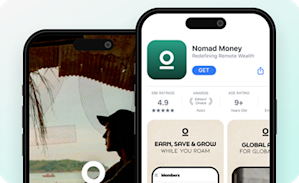Online Courses
Podia vs. Kajabi - Here's How They Compare
These two popular course creators each have pros and cons. We’ll show you how to find the right platform for your course.
Author
Mighty Team
Last Updated
May 27, 2025

Table of Contents
So you’re thinking of building a course. It’s a great time to do it. Online learning is everywhere, rumored to be a market that will hit $1 billion yearly by 2030.
And since building a course is one of the go-to monetization strategies of the creator economy, creators are in an awesome position to increase their brand reach and stabilize their income with an online course.
If you’re ready to build an online course, you’ve probably done some research and came up with two popular options: Podia and Kajabi. But you might also be struggling to know which to choose, especially since starting and building on the wrong platform promises to bring a lot of frustration in the long run.
We’ve got you covered.
In this article, we’re going to do a deep dive on Podia vs. Kajabi, paying attention to what each one does well and where each one falls short. We’ll walk through the factors to consider, and help you figure out which one might work for you.
If you want more support in building your online course and community, come join OUR Mighty Community for free and meet other new and established community owners! We’d love to meet you. Join for free!
Podia vs. Kajabi: What are they?

Podia website builder that lets users build pages simply and easily. It also has some features for selling products:an online course platform, a community platform, and ways to monetize with memberships, and downloads.
Kajabi is also an online course platform that gives you the power to build… well… online courses! It also comes with a set of complex marketing features including funnels and landing pages, a basic community forum feature, and other tools like memberships or analytics to help you get the most out of your online business. Kajabi also recently added some more community and virtual event features with the purchase of a platform called Vibely.
Podia vs. Kajabi: Factors to consider
Platform
One of the first things to consider if we’re comparing Podia vs. Kajabi is which one ACTUALLY lets you do what you need to do… in this case, we’re assuming that means building a course or selling a product. We'll also compare website-building functions. A great course platform should give you lots of functionality on the design and delivery options, letting you choose between asynchronous or cohort courses, plus options for evaluation.
Marketing options
Since both Kajabi and Podia come with some baked-in marketing features, it’s worth considering which of these two will serve you best. From email funnels to landing pages to analytics, we’ll look at how each of these gives you the power to actually SELL the course you worked so hard on.
Cost
While both of these have different features, they also come at significantly different price points – with Kajabi being 2-3x as expensive. We’ll compare what you get for those prices.
Community
With more and more people looking for community in their online courses, we’ll talk about the community-building features for each of these platforms. Do they let you bring your members together, keeping them inspired, excited, and motivated?
Access
Finally, we’ll talk about how your users will access your online course, especially paying attention to where Podia and Kajabi stand in terms of app options. (Hint – Podia doesn’t actually have an app.)
Here we go.
Podia vs. Kajabi
Course platform
Since they market themselves as online course-builders, it might not be a huge surprise that both Podia and Kajabi’s strongest features are their online course options. Each comes with a modern course builder that lets you add material, organize your course, and add features like quizzes.
But Podia has recently repositioned itself toward website-building, meaning you start with a website and can add a course or community to it.

But getting started is fairly easy. When you choose to add a product, it gives you a set of different things you can create. You just choose the appropriate one and it will pop up a template to get started.
If we choose “Online Course,” we’re taken to Podia’s course builder which lets you add in lessons one-by-one.
The LMS is extremely basic, but it works for adding the lessons and organizing the course according to what you need.
Kajabi has a course platform that’s more comprehensive that lets you create your course structure, and within each lesson you can add titles, categories, media (including either video or audio), as well as assessment options. You can also add a thumbnail image to each lesson to customize it.
Like Podia, Kajabi also lets you deliver your course material in different ways. This could include live instruction, and you also have the option to drip course content.
Both Kajabi and Podia also give you the ability to create a coaching program too. However, Podia’s is more geared towards selling coaching sessions and connects to your calendar, while Kajabi’s is dedicated to building pre-made coaching programs.
TL:DR; Overall, Kajabi is the much better platform for course and product-building, but Podia is a good website builder (that you then add a product to). The website builder comes with templates, different language options, and the option to connect products.
Marketing Options
Both Podia and Kajabi offer a set of tools to help you market your course. And Kajabi’s is by far the most comprehensive. Kajabi offers you options like creating custom landing pages (using a drag and drop builder) or working from a template, running email campaigns for sales and using funnels to sell your course.

Kajabi has focused a lot on the smallest details of these tools, for example, with options for upselling after purchase or automatically messaging people who abandon their carts. The whole sales process can be automated and tweaked.
Podia’s email options let you send individual broadcasts and set up campaigns, and it gives you some analytics about open rates, click rates, etc. It also gives you some of the other marketing features Kajabi does, like the ability to create coupons or enlist affiliates to help you sell your course. It’s not nearly as comprehensive as Kajabi, but then, it is less than half the cost – which is where we’ll go next!
TL:DR; When it comes to marketing options, Kajabi is definitely more comprehensive with email and funnel tools. But Podia also has decent email functionality built-in.
Price
While we talked about how Kajabi has a much more comprehensive platform, above, it comes at a price. Kajabi’s offerings are by far the most expensive. On the pricing chart below, the scratched out prices are for monthly payments – the prices displayed are if you pay the whole thing up front.
So, for example, the Growth plan paid up front would cost $1,908/year. And that’s before you’ve ever sold a single course!

Kajabi comes at nearly twice the cost of its competitors, and it’s not clear if that elevated price is worth it. Mighty Networks, for example, comes with many of the same features, plus a much better community option (below) at half the price.
Podia is a more limited product, but is much more affordable – starting from $41/mo on a yearly plan.
Community
We think a lot about community, because we’ve seen how powerful it is when you bring community and courses together. Without a community, course completion and satisfaction are abysmally low. But when you can build a network of people around your course, they end up excited and engaged.
Podia offers a very basic community function which is essentially a forum. You can create text or video posts, add members, and have a simple conversation--with some hashtag organization built in.

Kajabi has recently improved its community offerings by purchasing the platform Vibely. The result is a much more comprehensive Kajabi Community 2.0 which lets you create group conversations, chat, and livestream.
The main downside though is that the community platform is different from Kajabi's course platform--to use it you'll need two different logins and even two different apps.
TL:DR; Kajabi has a better community platform (Kajabi 2.0), but it requires a separate logon.
Access
Ok, so finally, let’s talk about access… and by access, we mean apps. Kajabi offers an app for either iOS or Android, that lets users access their courses. It works okay, although the community features on the app are limited.
The only downside, which we mentioned above, is that community and courses require two different apps. This can be annoying for users--and you couldn't have a discussion that's directly connected to a course.
Kajabi's Course App

Kajabi's Community App

Podia doesn’t have an app at all, which is a huge miss. An app makes your courses or products accessible to the many people who don’t log onto a laptop everyday, and as such, it’s needed.
TL:DR; Kajabi is the only option of the two with apps.
Want a better option?
While both Podia and Kajabi are strong course platforms they have different strengths and weaknesses. Kajabi is much more comprehensive but, as a result, is much more expensive. Podia is cheaper, but is missing key features like an app.
So here's an option that matches Podia in pricing and beats Kajabi on course and community features:
Building your course and community on Mighty Networks will come at the same price point as Podia BUT you get a huge set of course-building features.

Teach live OR pre-recorded courses natively and easily
Sell memberships, group coaching, masterminds, etc. in 135 different currencies
Host live events, livestreams, and experience engagement everywhere.
Built-in course AI features like auto-generated outlines, the "make-it-better" text editor, and more.
A built-in ConvertKit integration to connect your course and community to the best email platform.
The option to upgrade to your own branded app when ready.
And Mighty Networks comes with an amazing app built in that gives you all the same features of the web app.
But you don’t have to take our word for it! You can try it for free, no credit card required, and see what you could build with it!
Ready to start building your course?
Ready to start building your community?
Start a free 14-day trial to explore Mighty—no credit card required.
More like this
Join Mighty Community
Learn the principles of Community Design™ (and see them in action) alongside thousands of creators and entrepreneurs. It's free to join!

Online Courses
Creating a Course
Teaching a Course
Course Platforms
Selling a Course
Communities & Memberships
Community Platforms
Managing a Community
Building a Community
Growing a Community
Monetizing a Community
Content Creation
Creators & Entrepreneurs
Monetization
Content Creation
Starting a Business
Website Builders
Creating & Managing a Website
Events
Event Platforms
Hosting & Marketing Events
Branded Apps
Creating a Mobile App
Coaching Apps
Community Apps
Coaching
Mastermind Groups
Starting a Coaching Business
Coaching Platforms
Filter by Category
Online Courses
Communities & Memberships
Creators & Entrepreneurs
Events
Branded Apps
Coaching
Build a $1 Million Community
This free masterclass went viral—sign up to learn why.

























